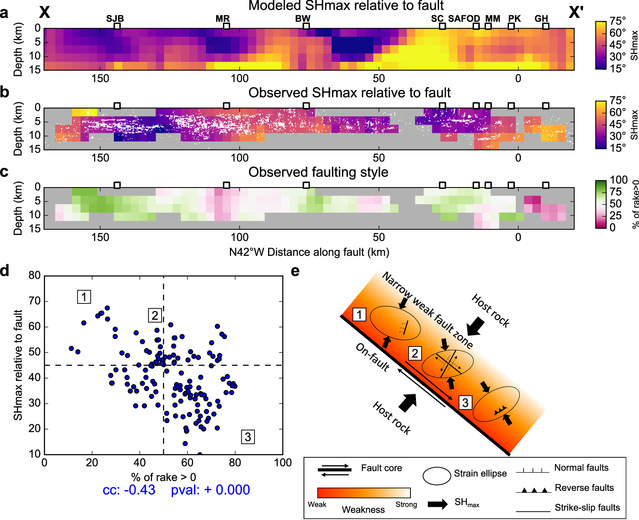yifang cheng,1,2,3,4* roland bürgmann,2,3 richard m. allen2,3
1 state key laboratory of marine geology, tongji university, shanghai, china
2 department of earth and planetary science, university of california, berkeley, ca, usa
3 berkeley seismological laboratory, university of california, berkeley, berkeley, california, u.s.a.
4 school of ocean and earth science, tongji university, shanghai, china
abstract:the central san andreas fault (csaf) exhibits a simple linear large-scale fault geometry, yet seismic and aseismic deformation features vary in a complex way along the fault. here we investigate fault zone behaviors using geodetic observation, seismicity and microearthquake focal mechanisms. we employ an improved focal-mechanism characterization method using relative earthquake radiation patterns on 75,164 ml ≥ 1 earthquakes along a 2-km-wide, 190-km-long segment of the csaf, from 1984 to 2015. the data reveal the 3d fine-scale structure and interseismic kinematics of the csaf. our findings indicate that the first-order spatial variations in interseismic fault creep rate, creep direction, and the fault zone stress field can be explained by a simple fault coupling model. the inferred 3d mechanical properties of a mechanically weak and poorly coupled fault zone provide a unified understanding of the complex fine-scale kinematics, indicating distributed slip deficits facilitating small-to-moderate earthquakes, localized stress heterogeneities, and complex multi-scale ruptures along the fault. through this detailed mapping, we aim to relate the fine-scale fault architecture to potential future faulting behavior along the csaf.
full article:


